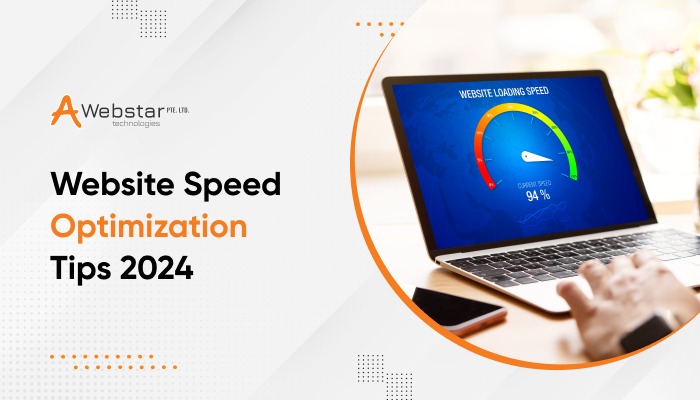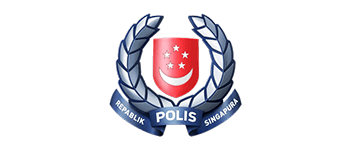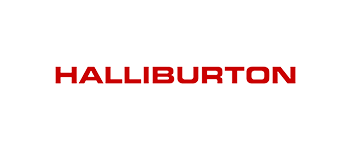
The speed at which your website loads can directly impact your search engine rankings in today’s fast-paced digital landscape. This can significantly make or break your online success.
Moreover, when a potential visitor lands on your website and finds it sluggish in terms of loading times they will definitely get frustrated.
Within the blink of an eye, they will click away and seek a more responsive experience elsewhere. Here, Website speed optimization enters the picture. It is the set of strategies and best practices that guide to make the website as fast as possible. This practice leads to a higher conversion rate, lower bounce rate and improved user experience.
In this blog post, we will dive deep into the world of web performance. We will thoroughly discuss how to optimize your website performance. So, leave your competitors behind as we explore the art and science of optimising web speed. Fasten your seatbelts as this is the time to accelerate into the lane of digital success.
How to test website performance
This segment of the blog post will make you familiar with the testing of a website’s performance. So, stay tuned and learn the intricacies of the same below. It covers the following components.
Time to First Byte (TTFB)
This measures the time it takes for a user’s browser to receive the first byte of data from your server after sending a request. TTFB is a critical indicator of server responsiveness and thus significantly impacts overall page load times.
Conventionally, a lower TTFB generally indicates a faster-loading website which further ensures that the visitors receive content promptly. Hence, its regular monitoring is essential to enhance user satisfaction and maintain an efficient web presence.
Largest Contentful Paint (LCP)
LCP is a set of user-focused elements that are typically considered by search engines in ranking algorithms. This offers insights into how quickly users can access and engage with the primary content.
Therefore, it is necessary to ensure a swift and efficient LCP to deliver a positive user experience. This further leads to reduced bounce rates and an optimized website leading to greater user satisfaction and search engine performance.
First Input Delay (FID)
It is the length of time between the first user interaction on a web page and the browser’s response to that interaction. Also, it is usually measured in milliseconds. Hence, the longer the delay, the worse the user experience. It is recommended to reduce site initialization time and eliminate long tasks that can help eliminate first-input delays.
Cumulative Layout Shift (CLS)
A measure of how much a webpage unexpectedly shifts during its life is termed CLS. Along with LCP and FID, CLS is a part of Google’s core web vitals. Google web crawlers measure CLS on each page they index.
How to Optimize Your Website Speed?
Improving website performance greatly depends on the speed of the website. This segment of the blog will shed some light on the optimisation of the website speed. Come along as we discuss the various parameters in detail. Let us get started!!
Optimising Images
Images are highly responsible for making your site more engaging and memorable but many sites use graphics heavily. If you are using too high of a resolution or your images are not compressed properly it can slow down your website’s performance.
Websites often use photographs with 2x or maybe 3x resolution so they’re displayed nicely on excessive-density presentations including retina screens. But if your customers are not using HiDP display you are just losing bandwidth and growing the burden time on your site visitors. This is specifically true if they’re on sluggish mobile records connections.
One can use WebP format instead of using one of the image formats like JPG, PNG and TIFF. This format provides superior lossless and lossy compression for images. In fact, WebP lossless images are 26% smaller in size as compared to PNG.
Limit Redirect Usage
More redirects mean more load on the server which increases loading time directly. Redirects usually send users away from the page they have willingly clicked on to another page. In many cases, they are a great way to connect high-ranking, high-traffic pages to the latest content created. It is worth using a redirect initially to keep the content views stable. On the other hand, it is recommended to replace old redirects with new content ASAP to keep load times short.
Reduce The Number Of HTTP Requests
Your site’s overall load time is efficiently increased with every HTTP request be it for images, stylesheets, scripts and fonts. These HTTP requests start piling up as your site grows eventually.
Furthermore, this creates a noticeable delay between user click-throughs and actual page loading. The total number of assets each page needs to load should be kept to a minimum. A speed test must be employed here to help identify which HTTP requests are taking the most time.
Track 404 Errors
Once a visitor runs into 404 errors it is very unlikely that they will try accessing your site again. It is quite possible that you have deleted or moved the page they are trying to access. In this manner, you can lose potential customers in heavy numbers. Therefore, regularly monitor your website for these errors by employing tools like Google Search Console. This will identify and fix broken links promptly to prevent users from encountering dead ends.
Combine and Minify Javascript & CSS Files
It is now possible to combine sets of Javascript or CSS files and thus reduce the number of steps required to completely load your site. WordPress plugins such as WP Rocket achieve this target with just a few clicks. Another way to reduce the size of your JavaScript and CSS is to minify them. This technique requires removing unnecessary codes like the following:
- White space characters, line breaks, comments and extra semicolons
- Unused functions and variables
- Longhand CSS selectors that could be shorthand
This will further reduce file sizes and therefore load times.
Conclusion
In a nutshell, improving website performance can be quite challenging. Website speed optimisation significantly impacts your business positively if it relies on the website as one of the main channels for reaching your customers.
This is an ongoing process that lasts forever. It implies that you do not need to implement all of the suggested changes today, rather you must spend some time looking into monitoring tool results. Also, make changes on the website and then compare the performance before and after the changes.
Awebstar Technologies is one such company that excels in optimising the speed of your website. We have happy and satisfied customers all over the world who have witnessed their businesses achieve new dimensions. So, do not look any further. Hire us and flourish your business in no time.















































